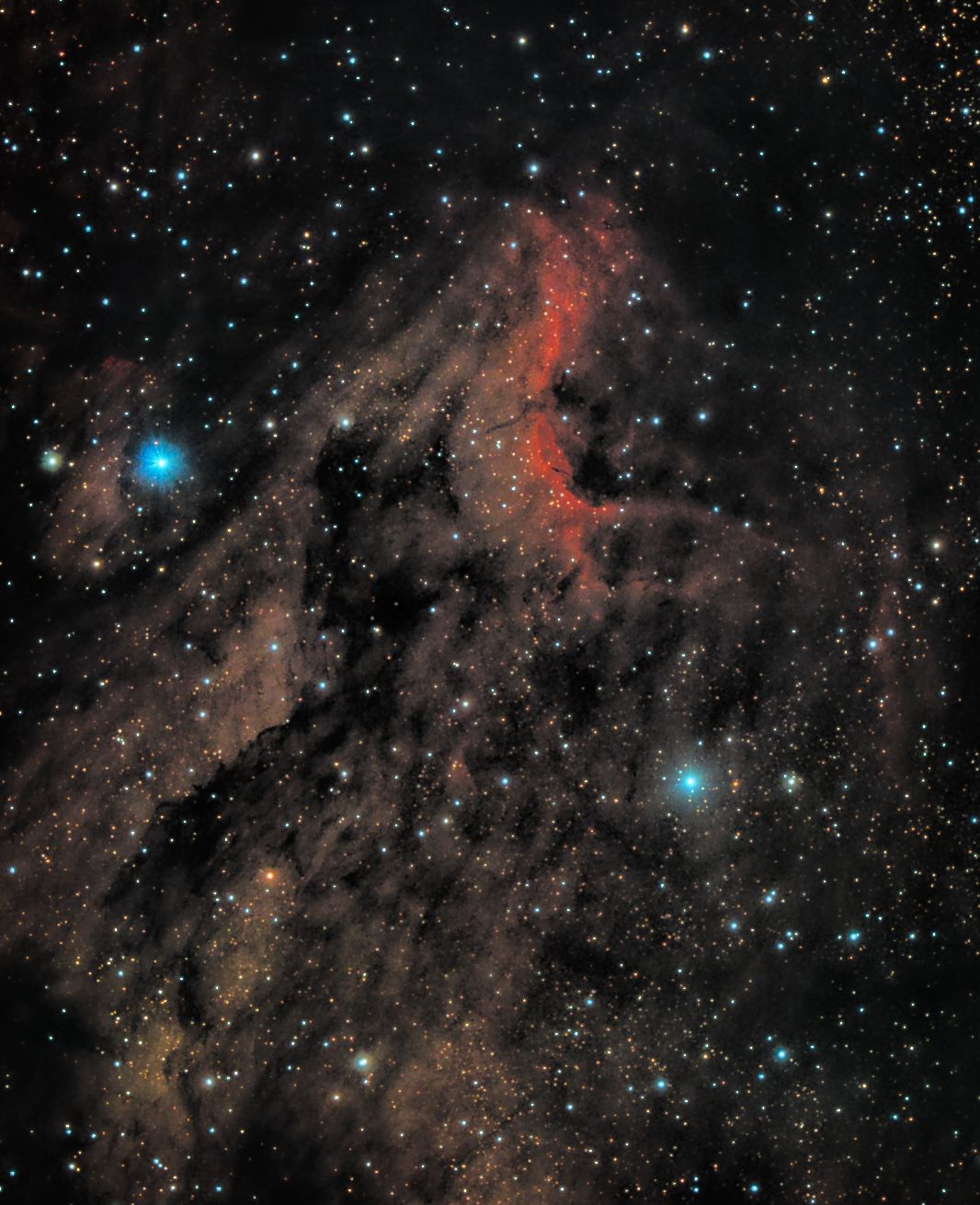The Pelican Nebula is an emission nebula whose outlines somewhat resemble the namesake bird. The nebula’s appearance is defined by dark dust clouds that outline the pelican’s long bill and eye, and by bright clouds of ionized gas that form the curved shape of the pelican’s head and neck. The pelican’s body and wing are formed by a complex mixture of bright nebulosity intermixed with dark dust clouds, as is the pouch hanging down from the bill.
The nebula is an active star forming region with a particularly active mix of star formation and evolving gas clouds. The young stars in the nebula are heating up the cold gas in their vicinity. A number of unusually dense narrow filaments of cold gas are still visible.
Pelican Nebula (60 min total exposure Nov 17, 2022)

The Pelican Nebula lies at a distance of 1,800 light years from us. It is catalogued as IC 5070 and IC 5067. The nebula itself is IC 5070, while IC 5067 is a prominent brightest part of it, found along the curve of the celestial pelican’s head and neck. The latter is a ridge of emission spanning about 10 light years, home to many newly formed stars.
I showed the Pelican Nebula two years ago (click here to see it and read my earlier description.) You will note that the previous image was rotated 90 degrees, which made it harder to imagine the figure of the pelican. In the intervening two years I’ve learned a lot about how to expose and process these images and have begun making longer and longer exposures to bring out more detail.